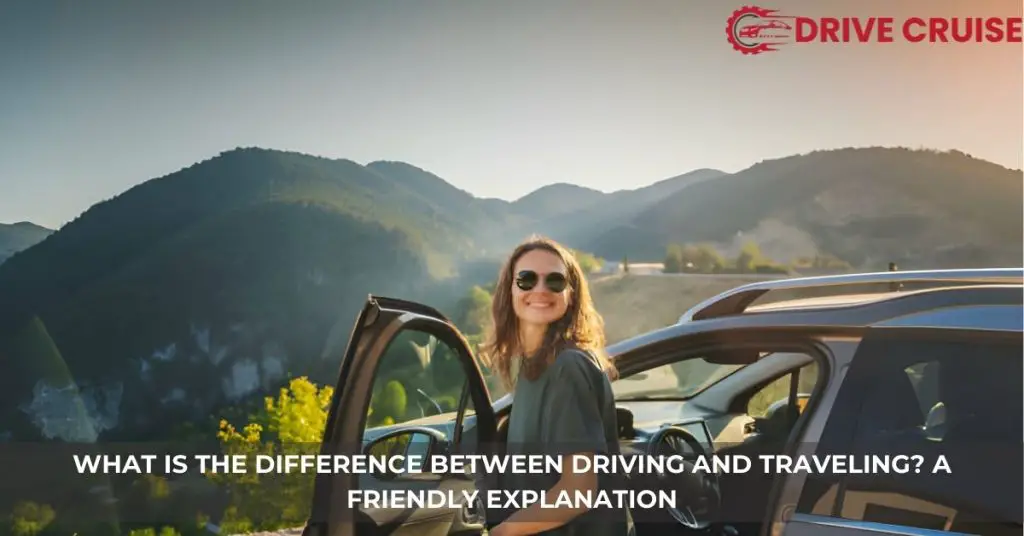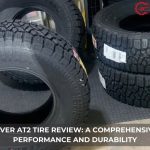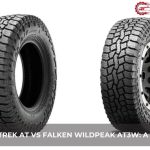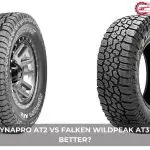At first glance, driving and traveling seem to be two sides of the same coin, both taking us from point A to point B. But when we dive deeper, we uncover a world of differences that set them apart. It’s not just about the mode of transportation or the distance covered; it’s about the experience, the intention behind the journey, and what we take away from it.
We’ve all been there, behind the wheel, focused on the road, with our minds often wandering to the destination rather than the journey itself. That’s driving. On the other hand, traveling is an adventure, a quest for new experiences, sights, and sounds, regardless of the mode of transport. It’s about soaking in every moment, every mile, and the stories they bring. Let’s explore these differences together, uncovering what makes each journey unique and why it matters.
Understanding the Basics
Expanding on the distinctions between driving and traveling, it’s essential to grasp their foundational differences. Driving is a task-oriented activity that emphasizes reaching a particular destination within a predetermined time. When we talk about driving, it involves operating a vehicle, typically a car, on public roads. The primary focus remains on the logistics, such as the best route to take, traffic conditions, and travel times. Driving is often associated with daily routines, including commuting to work or running errands.
On the other hand, traveling casts a wider net. It’s an exploratory pursuit that transcends mere movement from one location to another. Traveling encompasses various modes of transportation, including driving, but also extends to flying, sailing, hiking, and more. The essence of traveling lies in the experience rather than the method. It’s about soaking in new cultures, landscapes, and experiences. Whether we’re traversing continents or exploring undiscovered nooks of our hometown, traveling is synonymous with adventure and the quest for personal growth.
Understanding these basics helps us appreciate why driving can be just a portion of the traveling experience. While driving gets us to our destination, traveling is about the journey itself and what we learn along the way. It’s about the stories we gather, the people we meet, and the memories we create. In driving, the focus is on the destination, but in traveling, the journey is the destination. Embracing this distinction allows us to approach both driving and traveling with a mindset that enhances our experiences and enriches our lives.
Key Differences Between Driving and Traveling
Building on our understanding that driving focuses on the task of reaching a destination efficiently and traveling is more about the exploration and experiences along the way, let’s delve into the key differences that set these two activities apart.
Firstly, driving generally involves a personal or rented vehicle, such as a car or a motorcycle. It’s a skill that requires learning, practice, and adherence to road safety laws to transport oneself or others to a specific place. For example, commuting to work or running errands. On the other hand, traveling can encompass a variety of transportation modes, including driving but also extending to trains, planes, bicycles, and even walking. Traveling invites one to experience the journey from multiple perspectives, not limited by the confines of a vehicle’s interior.
Secondly, the purpose behind driving and traveling often diverges significantly. Driving is usually goal-oriented with a clear end point in mind. Whether it’s reaching the office on time, dropping kids off at school, or making it to a business meeting across the city, driving serves as a means to an end. Conversely, traveling embodies an exploratory spirit, where the destination, though important, takes a back seat to the experience of discovery, learning, and growth. Travelers seek out new cultures, cuisines, landscapes, and interactions, viewing their ventures as an opportunity to broaden their horizons and collect memories.
Lastly, the mentality associated with driving versus traveling reveals a stark contrast. Driving, especially as part of daily routines, can become monotonous and is often performed somewhat unconsciously. In contrast, traveling typically requires a mindful presence, an openness to the unexpected, and a readiness to step out of one’s comfort zone. This mindset shift is what truly differentiates traveling from merely driving, turning ordinary journeys into extraordinary tales of adventure.
In essence, while driving is an essential skill for mobility and accomplishing daily tasks, traveling is an enriching activity that promises growth, adventure, and a plethora of unforgettable experiences. By embracing both with the right mindset, one can find joy in the journey, regardless of the mode of transport.
Psychological and Emotional Impacts
Diving deeper into the distinction between driving and traveling, it’s crucial to explore the varying psychological and emotional impacts of each. While driving primarily serves practical purposes, such as commuting to work or running errands, it can sometimes lead to stress, especially in heavy traffic or during long hours on the road. In contrast, traveling tends to offer a more profound impact on one’s emotional and psychological well-being.
Engaging in travel, individuals often experience a sense of freedom and adventure. The act of exploring new places, cultures, and meeting new people can significantly enhance one’s mood and outlook on life. Traveling allows for a break from the routine, offering opportunities for self-discovery and personal growth. It’s not uncommon for travelers to return from their journeys with a renewed sense of purpose and a broader perspective on life.
Furthermore, the anticipation and planning stages of traveling can also bring joy and excitement, contributing positively to one’s emotional health long before the actual trip begins. On the other hand, the routine nature of driving, especially in familiar settings, rarely offers these emotional benefits.
It’s also worth noting the sense of accomplishment and satisfaction that comes from overcoming challenges while traveling. Navigating unknown territories, communicating in different languages, and adapting to new cultures can boost confidence and resilience, attributes less commonly developed through regular driving.
In essence, while driving is often associated with necessity and routine, yielding minimal emotional growth, traveling stands out as a source of enrichment. It not only breaks the monotony of daily life but also promotes emotional well-being and psychological growth, making the journeys we undertake as valuable as the destinations we reach.
Environmental Considerations
Transitioning seamlessly from the psychological and emotional implications of driving and traveling, we now turn our attention to an equally important topic: environmental considerations. Both driving and traveling have distinct impacts on our planet, which we believe are essential to explore.
Driving, especially when it involves vehicles powered by fossil fuels, significantly contributes to carbon emissions. These emissions are a leading cause of global warming and climate change. Every gallon of gasoline burned in a car emits about 20 pounds of carbon dioxide into the atmosphere. Therefore, frequent driving, particularly for short distances where alternative modes of transport might suffice, poses a substantial environmental concern.
Traveling, on the other hand, offers a broader spectrum of environmental impacts depending on the mode of transportation selected. Air travel, for example, is notoriously carbon-intensive, often surpassing the emissions of regular driving on a per-trip basis. However, environmentally conscious travelers have the option to opt for greener alternatives. Trains, buses, and even carpooling reduce the per-passenger carbon footprint dramatically. Furthermore, traveling tends to foster a deeper appreciation for the natural world, which can inspire more sustainable personal choices and practices.
It’s crucial, then, to consider the ecological footprint of our journeys. Opting for electric or hybrid vehicles, leveraging public transportation, or simply choosing destinations closer to home can significantly reduce our environmental impact. Moreover, when we travel with a mindset geared toward sustainability, we not only enjoy the personal benefits and growth but also contribute positively to the well-being of our planet.
In this light, it becomes clear that the environmental considerations of driving and traveling are not to be overlooked. They intertwine with the psychological, emotional, and personal growth aspects, further emphasizing the importance of choosing how we move through the world consciously. By pondering the environmental implications, we can make decisions that align with our values, ensuring that our adventures enrich us without impoverishing our environment.
The Role of Technology
Technology has dramatically transformed both driving and traveling, enhancing efficiency, safety, and enjoyment. Our journeys are now easier to plan, execute, and share, thanks to innovative apps and devices that cater specifically to the needs of drivers and travelers alike.
For drivers, navigation technologies such as GPS and mapping applications have been game-changers. We no longer need to rely on printed maps or stop to ask for directions, making driving more straightforward and less stressful. These technologies provide real-time traffic updates, suggesting alternative routes to avoid congestion, thereby improving efficiency and reducing travel time. Furthermore, advancements in vehicle technology, like autonomous driving features, aim to enhance safety by reducing human error, which is a leading cause of accidents on the roads.
When it comes to traveling, technology has opened up a world of possibilities. Online platforms make it easy to book flights, accommodations, and even adventure experiences, often with a few clicks. We can now access detailed information about our destination, from local attractions to cultural norms, ensuring we’re well-prepared for our journey. Technologies such as virtual reality offer a taste of a place before we even get there, which can be invaluable in planning our travels. Moreover, social media platforms allow us to share our experiences with friends and family in real-time, keeping us connected no matter where we are in the world.
Digital tools for language translation and financial transactions further simplify traveling, breaking down language barriers and making it easier to manage money across different currencies. These technological advancements enrich our travel experiences, allowing us to focus more on discovery and less on the logistics of travel.
Technology plays a pivotal role in how we drive and travel today. It not only makes our journeys safer and more efficient but also enhances the overall experience by removing barriers that once made traveling seem daunting or driving tedious. Whether we’re navigating to a nearby town or planning an expedition across continents, technology ensures our journeys are smoother and more enjoyable.
Personal Preferences and Lifestyle Choices
When it comes to choosing between driving and traveling, personal preferences and lifestyle choices play crucial roles. We each have unique inclinations that influence our decision on whether to hit the road behind the wheel or embark on a journey of exploration and discovery. Let’s dive into how these factors shape our experiences.
First, consider the value of time and convenience. For some of us, the efficiency of driving makes it the preferred choice, especially for daily commutes or when time constraints are tight. In contrast, those of us with a penchant for leisure and serendipity might find traveling, with its slower pace and open schedule, more appealing.
Next, lifestyle choices come into play. Individuals leading fast-paced, busy lives might opt for driving as a way to control their schedules tightly. On the other hand, those of us seeking personal growth, adventure, and experiences that break the monotony of daily life lean towards traveling. The thrill of immersing in new cultures, meeting new people, and accumulating stories along the way aligns with a lifestyle that prioritizes enrichment over efficiency.
Moreover, comfort and accessibility matter. Some individuals prefer the familiar comfort of their own vehicle, making driving the go-to option, while others relish the challenge and excitement that comes with navigating public transport in a new city or hiking through unknown terrains.
Finally, environmental consciousness influences decisions too. We’re increasingly becoming aware of the impact of our travel choices on the planet. Those of us committed to sustainable living might prefer traveling in eco-friendlier ways, such as biking, walking, or using public transportation, over driving.
Whether we gravitate towards driving or traveling says a lot about our priorities, lifestyle, and what we seek in our journeys. The choice between the two is deeply personal and reflects our individual desires to either navigate the most direct path or explore the road less traveled.
Conclusion
We’ve explored the nuances that distinguish driving from traveling, each with its unique impact on our lives. While driving gets us where we need to go, traveling takes us beyond the destination to enrich our souls and broaden our horizons. It’s about choosing between a journey focused on the endpoint and one that celebrates the path itself. Whether we’re behind the wheel with a clear goal in mind or setting off on an adventure that promises personal growth, our preference reflects our current life chapter and values. Ultimately, the way we choose to move through the world—driving for efficiency or traveling for experience—shapes not just our journeys, but also our stories.
Related Posts:
- 265 vs 285 Tires: Which Size is Right for Your Vehicle?
- BF Goodrich KO2 vs Toyo Open Country AT3: Which is the Best All-Terrain Tire?
- BF Goodrich Trail Terrain vs KO2 All Terrain TA: Which is the Better Off-Road Tire?
- Cooper Discoverer Rugged Trek vs BF Goodrich KO2: Which is the Better Tire?
- Primewell Valera H/T Review: A Friendly Guide to Choosing the Right Tires
- Best 10 Ply Tires for Towing: Top Picks for Heavy-Duty Hauling
- What is the Difference Between Driving and Traveling? A Friendly Explanation
- Stop Start Not Ready? Here’s How to Disable Battery Protection Mode on Your Jeep







